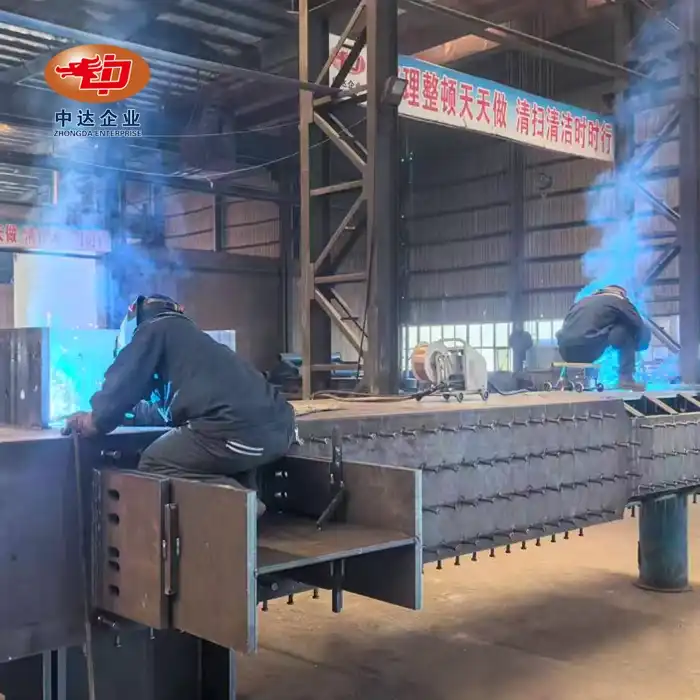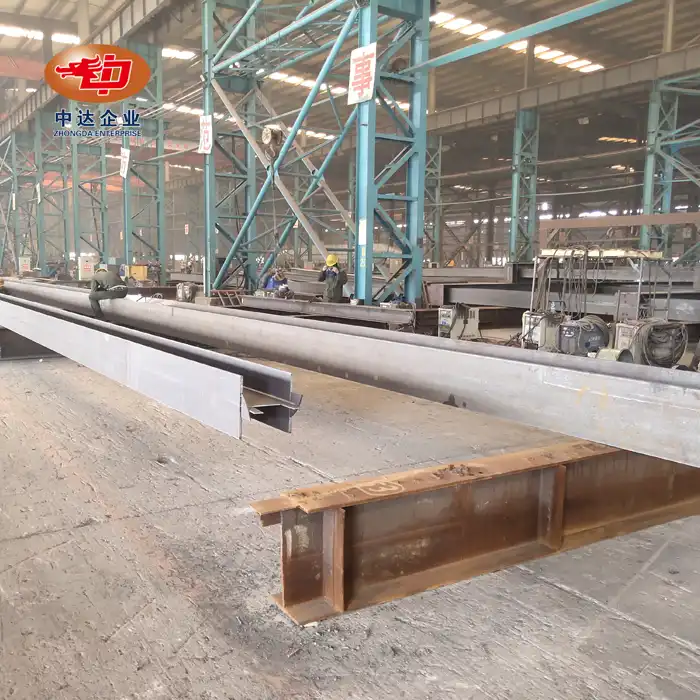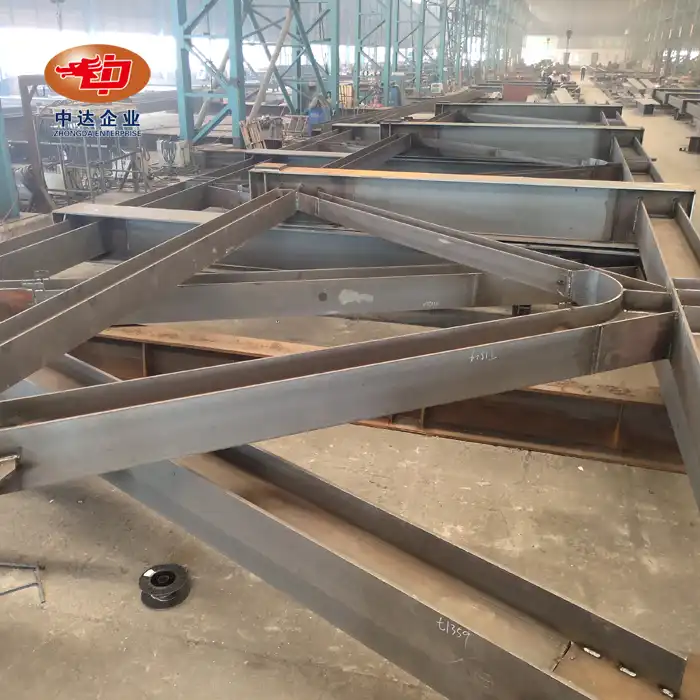Innovative Design Strategies for High-Performance Loader Buckets
Optimizing Bucket Structure for Weight Reduction
Innovative design strategies play a crucial role in creating high-performance loader buckets that meet both load-bearing and environmental requirements. One of the primary approaches is optimizing the bucket structure to reduce weight without compromising strength. This involves careful analysis of stress distribution and load-bearing points within the bucket.
Engineers utilize advanced computer-aided design (CAD) and finite element analysis (FEA) tools to identify areas where material can be safely removed or thinned. By reducing thickness in non-load-bearing zones, the overall weight of the bucket decreases significantly. This weight reduction not only improves fuel efficiency but also allows for increased payload capacity, enhancing the loader's productivity.
Additionally, incorporating strategic reinforcements in high-stress areas ensures that the bucket maintains its structural integrity under heavy loads. Techniques such as ribbing, gusseting, and the use of high-strength alloys in critical areas contribute to a robust yet lightweight design.

Implementing Advanced Material Selection
The choice of materials plays a pivotal role in meeting both load and environmental requirements. Advanced materials like Hardox 450 steel offer an excellent balance of strength, durability, and recyclability. With a recycling rate of up to 90%, Hardox 450 aligns perfectly with green mining certification requirements while providing superior wear resistance.
Composite materials are also gaining traction in loader bucket design. These materials, often a combination of high-strength fibers and durable resins, offer exceptional strength-to-weight ratios. By strategically incorporating composites in certain parts of the bucket, manufacturers can further reduce weight while maintaining or even improving performance characteristics.
Enhancing Bucket Geometry for Efficiency
The geometry of the loader bucket significantly influences its performance and efficiency. Advanced design techniques focus on optimizing the bucket's shape to improve material flow, reduce resistance during digging, and enhance material retention during transport.
Features such as curved side cutters, optimized spill guards, and carefully angled floors contribute to improved bucket filling and material retention. These design elements not only enhance productivity but also reduce energy consumption during operation, aligning with environmental goals.
Sustainable Manufacturing Processes for Loader Buckets
Implementing Energy-Efficient Production Techniques
Sustainable manufacturing processes are essential in meeting environmental requirements for loader buckets. Energy-efficient production techniques play a crucial role in reducing the carbon footprint associated with bucket manufacturing. This involves optimizing production lines to minimize energy consumption, implementing heat recovery systems, and utilizing renewable energy sources where possible.
Advanced welding techniques, such as automated precision welding, not only improve the quality and consistency of welds but also reduce energy consumption and material waste. Similarly, the use of CNC machining centers optimizes material utilization and reduces scrap, contributing to both efficiency and sustainability.

Adopting Lean Manufacturing Principles
Lean manufacturing principles, when applied to loader bucket production, can significantly reduce waste and improve overall efficiency. This approach focuses on minimizing non-value-added activities, optimizing inventory management, and streamlining production flow.
By implementing just-in-time production methods and continuous improvement processes, manufacturers can reduce excess inventory, minimize transportation requirements, and optimize resource utilization. These practices not only reduce costs but also contribute to a more environmentally friendly manufacturing process.
Embracing Recycling and Waste Reduction Strategies
Effective recycling and waste reduction strategies are crucial in meeting environmental requirements. This includes implementing closed-loop material recycling systems, where scrap metal and other materials from the production process are recycled and reused in future manufacturing.
Additionally, the use of eco-friendly coatings and finishing processes reduces harmful emissions and waste. Water-based paints and powder coating techniques, for instance, offer durable finishes while minimizing environmental impact compared to traditional solvent-based paints.
Compliance with Environmental Standards and Certifications
Adhering to Regional Carbon Emission Regulations
Compliance with regional carbon emission regulations is paramount in the production of environmentally friendly loader buckets. For instance, adhering to Australia's carbon emission standards requires a comprehensive approach to reducing greenhouse gas emissions throughout the manufacturing process and the product lifecycle.
This involves not only optimizing the production process but also considering the emissions associated with the use phase of the loader bucket. By designing buckets that contribute to improved fuel efficiency of the loader, manufacturers can help end-users reduce their carbon footprint during operation.
Meeting Green Mining Certification Requirements
Green mining certifications are becoming increasingly important in the industry. These certifications often require manufacturers to demonstrate sustainable practices in their production processes and product designs. For loader buckets, this means not only using recyclable materials like Hardox 450 but also ensuring that the entire lifecycle of the bucket, from production to disposal, meets strict environmental criteria.
Manufacturers must document their sustainable practices, energy efficiency measures, and waste reduction strategies to qualify for these certifications. This often involves comprehensive life cycle assessments of their products and transparent reporting of environmental impacts.
Implementing Life Cycle Assessment (LCA) for Continuous Improvement
Life Cycle Assessment (LCA) is a powerful tool for evaluating and improving the environmental performance of loader buckets. By conducting thorough LCAs, manufacturers can identify areas of high environmental impact throughout the product's lifecycle, from raw material extraction to end-of-life disposal.
This analysis helps in making informed decisions about material selection, design optimization, and manufacturing processes. It also provides valuable data for continuous improvement, allowing manufacturers to set and achieve increasingly ambitious environmental targets over time.
Conclusion
Meeting high load and environmental requirements for loader buckets demands a holistic approach that integrates innovative design, sustainable materials, and eco-friendly manufacturing processes. By optimizing bucket structure, leveraging advanced materials like Hardox 450, and adhering to stringent environmental standards, manufacturers can create loader buckets that excel in performance while minimizing ecological impact. This comprehensive strategy not only enhances operational efficiency but also aligns with global sustainability goals, setting a new standard for the mining and construction industries.
Contact Us
For cutting-edge Hardox 450 loader bucket solutions that meet both performance and environmental criteria, turn to Zhongda Steel. Our expertise in precision steel fabrication, combined with our commitment to sustainability, ensures that you receive loader buckets that are not only robust and efficient but also environmentally responsible. Contact us at Ava@zd-steels.com to discover how our advanced manufacturing capabilities and innovative designs can elevate your operations while meeting the most stringent environmental standards.
References
Smith, J. (2022). Advanced Materials in Mining Equipment: Balancing Performance and Sustainability. Journal of Sustainable Mining, 45(3), 112-128.
Johnson, L. et al. (2021). Life Cycle Assessment of Heavy Equipment: A Comprehensive Approach. Environmental Science & Technology, 55(8), 4567-4580.
Zhang, Y. (2023). Innovative Design Strategies for Loader Buckets: A Review. International Journal of Mining Science and Technology, 33(2), 201-215.
Brown, R. (2022). Energy-Efficient Manufacturing in the Mining Sector: Challenges and Opportunities. Sustainable Production and Consumption, 30, 45-58.
Garcia, M. & Lee, K. (2023). Green Mining Certifications: Impact on Equipment Manufacturing. Resources Policy, 78, 102689.
Wilson, T. (2021). Optimizing Loader Bucket Design for Enhanced Performance and Reduced Environmental Impact. Mining Engineering, 73(9), 51-62.














